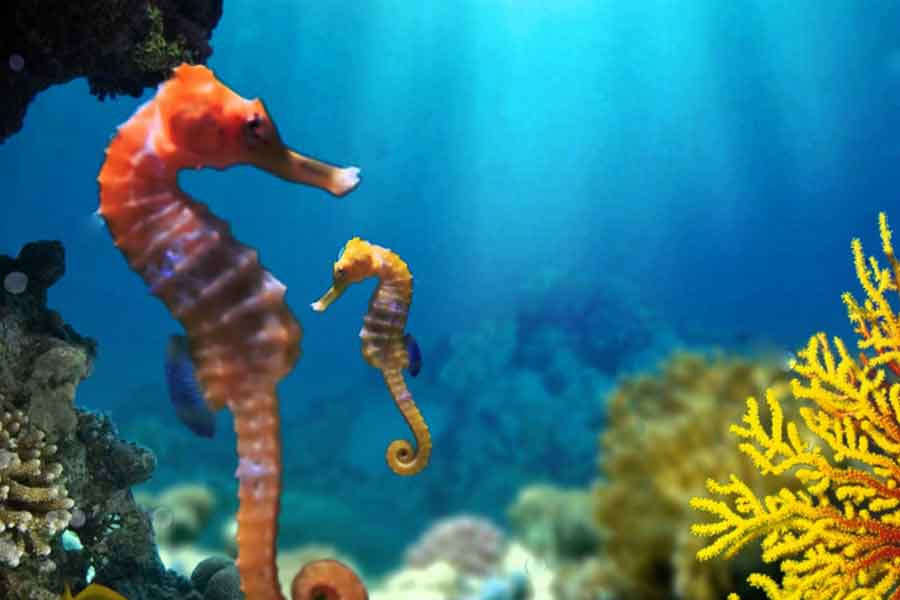
Pliny the Elder (23-79 AD) described the seahorse as «hippus,» and to this day, the term «hippocampus» is still used, which means «horse-caterpillar.»
Their secret weapon lies in their precise millimeter-level suction. Any planktonic organism swimming within a four-centimeter radius of their elongated snout will be drawn into their tubular mouth at such a speed that escape becomes impossible. A juvenile seahorse feeds for approximately ten hours a day, consuming over 3,600 shrimp larvae (Artemia) during that time.
They move by oscillating their dorsal and pectoral fins, which seem to be in a constant state of vibration. The change in head position regulates the direction of the animal, and when propelled at its maximum speed, the fins can flap up to 35 times per second. Their tail, more dexterous than an elephant’s trunk, allows them to cling to corals and algae, enabling them to remain stationary with minimal effort.
«One cannot defend what they do not love, and one cannot love what they do not know.»

